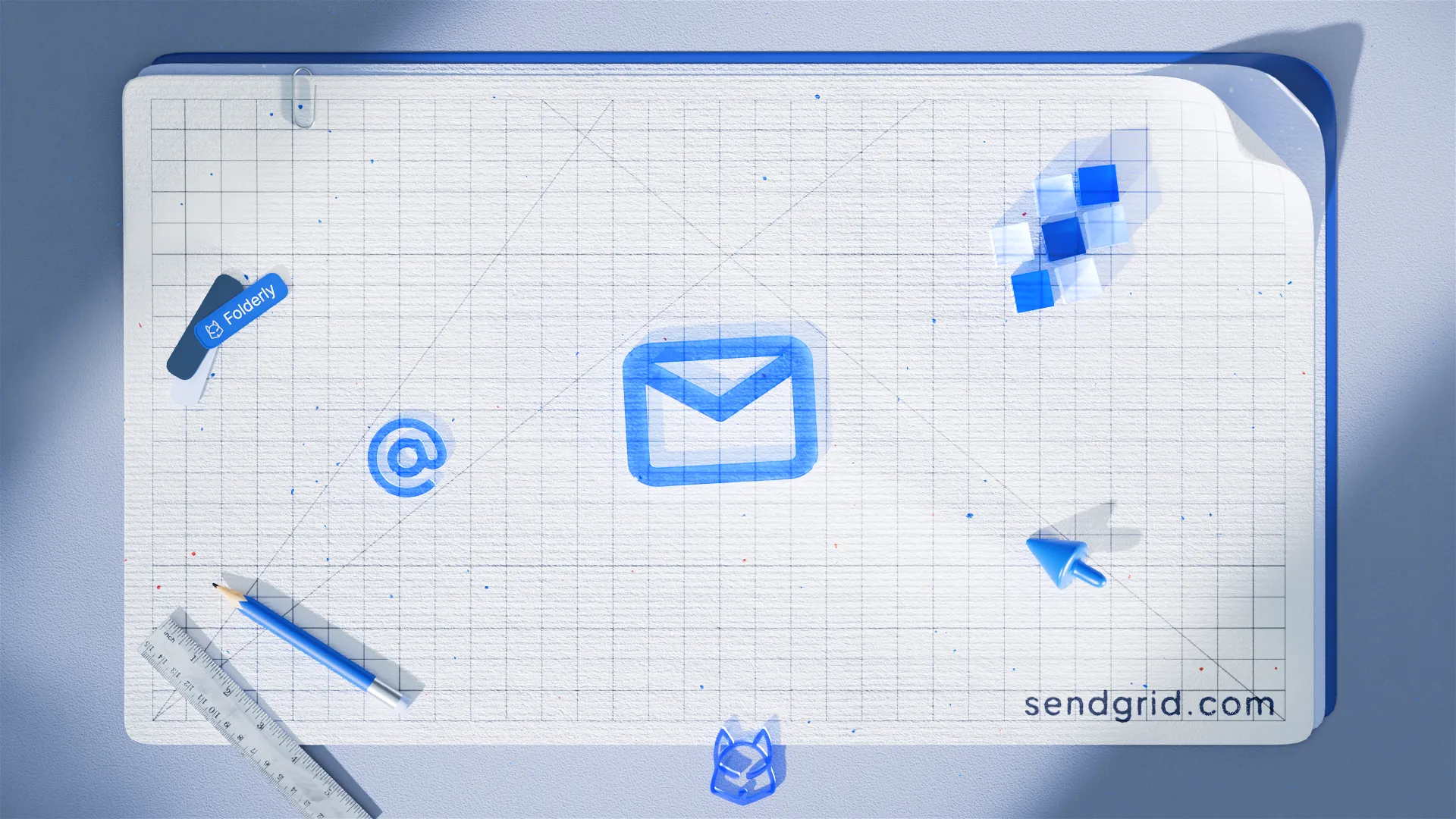Any profitable business has a dedicated customer base behind it, and it helps the company gather and increase revenue. However, that’s rarely enough, and every enterprise tries its best to grow the consumer range, and that is where effective marketing comes in. Still, there are drawbacks to the notion that beg for effective solutions too, and many of them can be fixed with the help of Folderly, but let’s discuss things in order.
Email marketing is one of those areas that are incredibly susceptible to spamming that can ruin the most successful business. Spammers tend to impersonate reputable companies and send out various inappropriate emails that make even the most dedicated of users turn away from a given business. Domain authentication is among the vital tools to avoid the undesirable outcome and make sure that your emails are well-protected and secure, thus sent to the primary inbox instead of ending up in the spam folder.
What is SendGrid domain authentication?
SendGrid is among the verified service providers that deal with the field of domain authentication. To put it simply, once you authenticate your domain with SendGrid, the system will send your marketing content on your behalf. So, the receivers see the incoming emails labelled as coming from you, not sent “via SendGrid”.
Once you choose the SendGrid domain authentication option, you should allow the service to work as a mediator, but the client base may never learn about it. It takes to direct the DNS records from your provider to SendGrid to activate SendGrid domain authentication. Such an approach may not have a serious effect on the way the recipients treat your emails. However, the increase in sender reputation will surely show once you check email deliverability rates.
The issue of spam is so overwhelming at the moment that most Email Service Providers try to filter out any messages that even relatively resemble unreliable content. Thus, a trustworthy domain reputation comes of great importance if you want to work on deliverability, expand your marketing reach and increase potential income from user conversion.
Vital domain authentication terms to distinguish between
When it comes to domain authentication SendGrid features, it includes crucial components that a user should be familiar with. The better you understand the process, the easier it will be to implement the system into the workflow.
DNS
SendGrid DNS implies for Domain Name System. The given system grants various domains their titles. SendGrid asks for your domain name in order to send future emails from it. In case you don’t know what your DNS provider is, you need to look for your host service.
SPF
SendGrid SPF record, aka Sender Policy Framework, is designed to compare the sender’s IP address to those known to be allowed to send messages from the given domain. You can use an SPF record generator if you don’t want to work with an automatically created record. However, you need to remember that multiple SPF records include more issues to fix rather than a single one. Therefore, it’s advised to stick to the single-SPF route.
DKIM
Just like SendGrid SPF DKIM is used for authentication purposes. The notion deciphers as DomainKeys Identified Mail, which is known to assist various email providers in blocking spammers. The tool is used to validate emails from specific domains so that no harmful email gets through.
DKIM is widely adopted as one of the most effective authentication means. Due to the cryptographic approach, the message header gets a peculiar digital signature. The main aim of the signature is to prove domain authentication in the eyes of a user who receives the sent message. The mentioned signature looks like a text line represented as a public key. So, when the emails come in, the public key is decrypted and verified, thus proving authentic.
CNAME
Finally, SendGrid authentication for your domain includes a CNAME record. The primary goal of this record is to create a sort of nickname for subdomain.yourdomain.com and direct it to SendGrid. This is done to monitor the click and open rates of your emails in the first place. You can access the statistics by going to your account, and based on the provided data, you can work on some improvements or leave the matter as it is.
As you can see, domain authentication SendGrid is essential for your business.
Main benefits of SendGrid domain authentication
Some of you may still question SendGrid authentication and whether it is truly necessary. So, the best way to ensure its use is to provide the list of advantages that the process can bring. Then, depending on how much your business may grow with those perks intact, you can determine the necessity of system implementation. Here’s what you can count on after successful SendGrid domain authentication:
- Increase email deliverability rates.
- Domain misuse prevention.
- Primary inbox landing chances spiked.
- Enhanced sender reputation stats.
What if you skip on domain authentication SendGrid offers?
Even with the mentioned benefits in mind, some companies may consider the process too complicated or the implementation too costly. If you belong to the category, you need to be aware of the potential consequences of skipping the process. The truth is that most mailbox providers immediately detect messages sent from unauthenticated domains and warn their users. So, even if your email gets to the recipient and doesn’t end up in the Spam folder, the service provider will warn the email user that the email is potentially harmful or contains spam information. Such messages go to the Trash bin almost immediately without a chance of being opened. The result of such unsuccessful email marketing will have a direct toll on the campaign and potential business development, let alone company income rates.
What is the aim of sender authentication SendGrid presents?
Aside from domain authentication, there is also the notion of sender authentication SendGrid exploits. The main aim of the process is to prove to those customers who receive emails from the system on your behalf that they have your permission to do so. When you work with sender authentication, you should provide the hosting service with DNS records that will associate SendGrid with the sending domain. In such a way, the provider that processes the sent emails will detect your domain instead that of SendGrid’s. Sender authentication SendGrid presents also enables clients to set it up for links that an email may contain along with the IP address directly associated with your company’s account.
How to set domain authentication with SendGrid up?
Now, when you are fully aware of what domain authentication is, what it can give you and what will happen when you skip the service, you need to know how to carry on the action using SendGrid. Beware that you can exploit SendGrid multiple domains authentications, should you require it.
The primary thing to do before you carry on with the authentication is to provide your hosting provider with specific DNS records that SendGrid gives you.
After that, you should stick to this step-by-step guide:
- Go to your SendGrid account and click on Settings.
- Pick Sender Authentication option.
- Initiate the process in the domain authentication section.
- Provide the DNS host data. At this point, you can also point out if you are interested in link branding and proceed by pressing Next.
- Type in the domain you are going to assign SendGrid to issue emails from and introduce advanced settings, if necessary. Then, add the name of the root domain solely, without any further information. Press Next.
- Implement all CNAMEs to the DNS host. The process may vary depending upon the host in use.
Do you need SendGrid MX records?
In case you don’t know what a SendGrid MX record is, it’s an Email Exchanger record. The main purpose of SendGrid MX record is to identify the server that will accept the email addresses as the domain would. The record is used if you turn automated security off. In this case, you will need to fill in the TXT and MX records instead of the mentioned CNAME ones.
Some providers are programmed to add your domain to the new DNS record values automatically. If this happens, the CNAME will be packed with too much data, leading to authentication failure. So, it helps to check the CNAME if you see that the process takes a little too long.
Those of you who wonder how the CNAME record look to know how to add them to your DNS, follow the example:
Example:
Make sure that you don’t alter the VALUE and POINT TO fields.
At times, it takes up to 48 hours for the records to be verified after being uploaded, so that you need to come back and verify them. To do so, you will need to return to the Sender Authentication and press Verify. Should you notice that only half of the records are verified, you may need to wait a little longer or look for an error that you’ve made while entering the CNAME records.
What are the advanced settings?
If you think that only setting up SendGrid multiple domains requires advanced settings, that’s not true. It depends upon your personal needs and preferences. Among the Advanced settings, you can experiment with the following:
Automated security – you will enable SendGrid to sign your DKIM and authenticate SPF for outbound emails with CNAME records.
Custom return path – the option allows it to customize the subdomain.
Custom DKIM selector – the feature is designed to help you authenticate the same domain a couple of times.
Sub-user introduction – the function will help you secure and authenticate the sub-user and separate it from the parent account.
Reach out to professionals
Folderly SendGrid combo is a potent concoction that can boost your business rates and help you generate the profits you have always dreamed about. SendGrid SMTP and domain authentication come of great use when it comes to excellent email deliverability and open rates that skyrocket. With this practical guide, you will master the latter in terms of theory, and Folderly professionals will assist you in dealing with the practical part!

